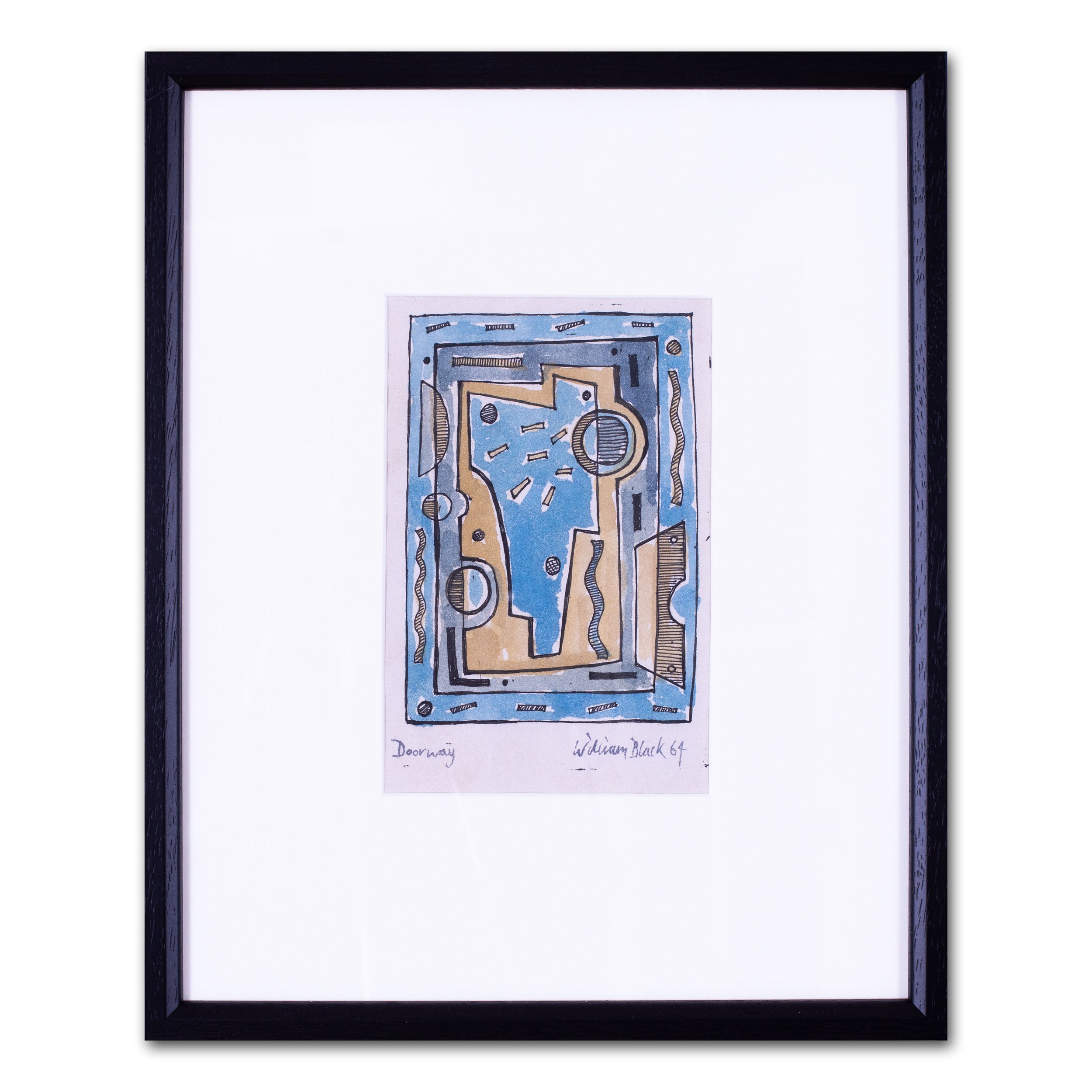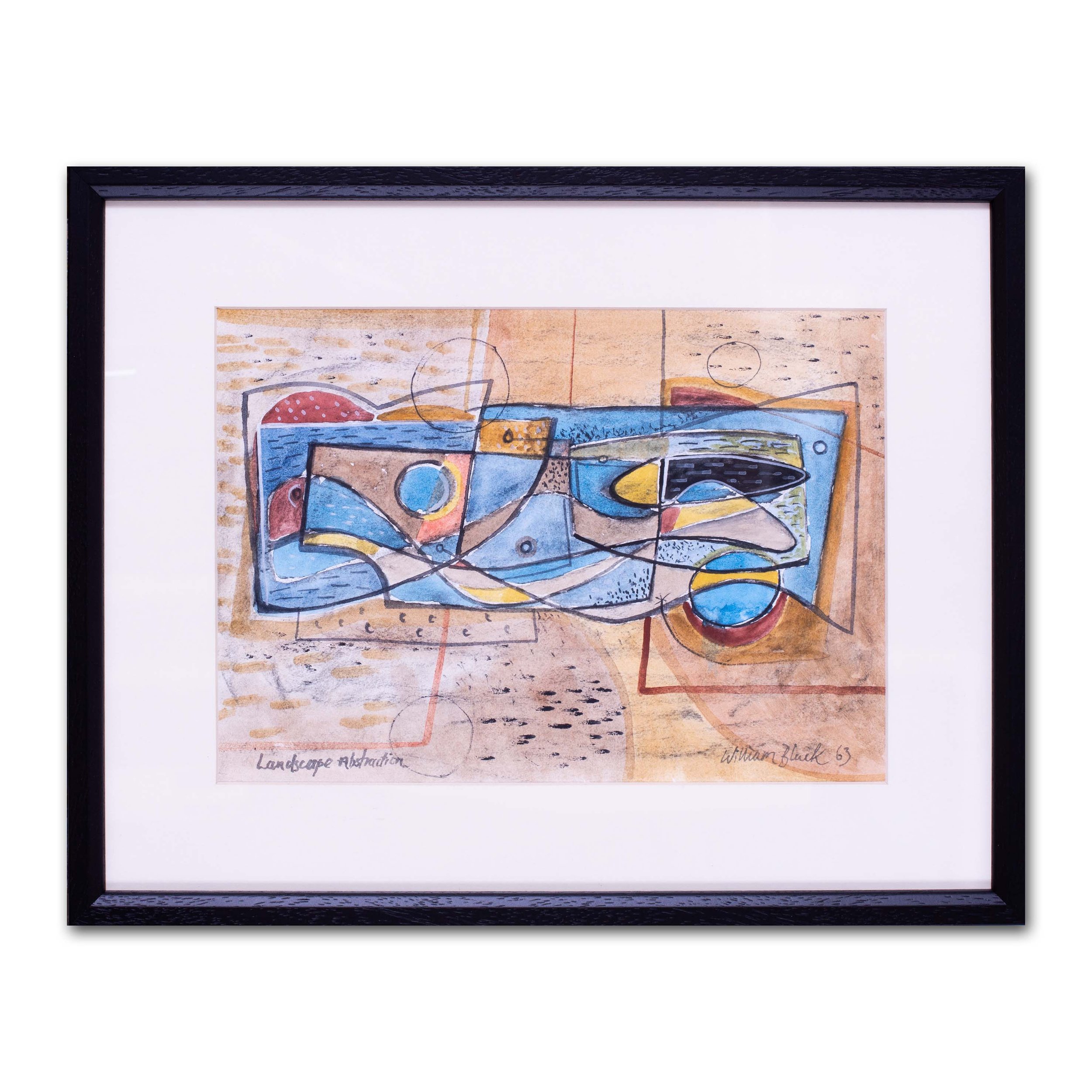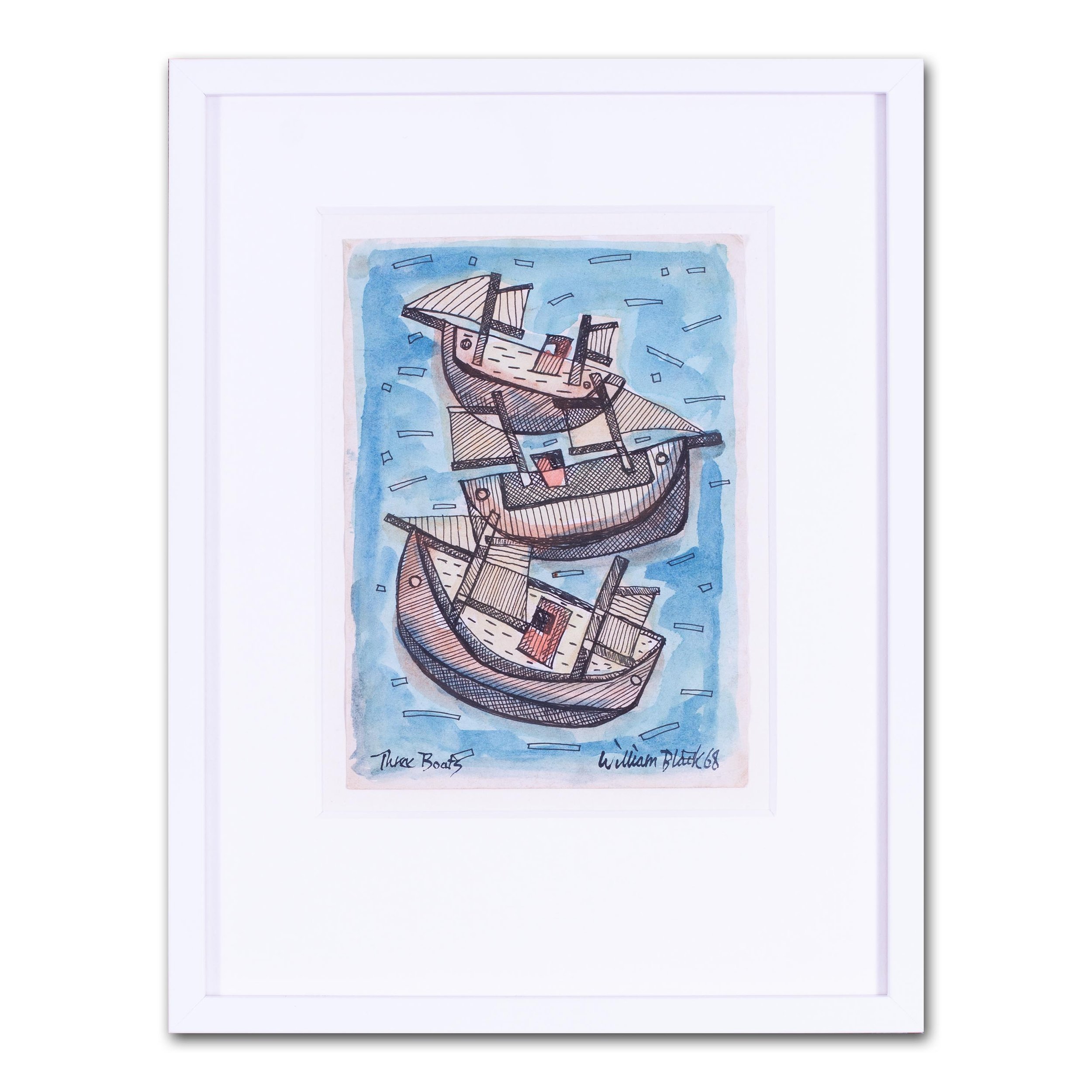William Black, 'Doorway'
William Black, (British, Fl. 1963 – 69)
Doorway
Ink and watercolour on paper
Signed, inscribed and dated ‘Doorway William Black 64’ (lower edge)
7.1/2 x 4.7/8 in. (19.2 x 12.4 cm.) (to site edge)
William Black is a little known and underrated member of the St Ives artist group who, having worked as an architect after the Second World War, went on to work as an artist following the inheritance of money in the early 1950s.
He was a self taught artist, producing numerous deconstructivist sculptures in the 1960s. He moved to St Ives in Cornwall where he knew artists such as Ben Nicholson, Barbara Hepworth and Naum Gabo. There is a clear architectural element to the sculptures that he made . They illustrate an assemblage of fragmented shapes and forms of a deconstructivist nature.
William Black’s artwork is very much rooted in the time and Cornish School so one can see elements from those such as Wilhelmina Barns Graham , George Hammond Steel and even Fred Wallis, all of whom would have been familiar to him . He was however closest to John Tunnard who , like himself, was slightly outside the main group of artists at that time . As a result his work has only recently become better known and acknowledged by the mainstream art world .
William Black, (British, Fl. 1963 – 69)
Doorway
Ink and watercolour on paper
Signed, inscribed and dated ‘Doorway William Black 64’ (lower edge)
7.1/2 x 4.7/8 in. (19.2 x 12.4 cm.) (to site edge)
William Black is a little known and underrated member of the St Ives artist group who, having worked as an architect after the Second World War, went on to work as an artist following the inheritance of money in the early 1950s.
He was a self taught artist, producing numerous deconstructivist sculptures in the 1960s. He moved to St Ives in Cornwall where he knew artists such as Ben Nicholson, Barbara Hepworth and Naum Gabo. There is a clear architectural element to the sculptures that he made . They illustrate an assemblage of fragmented shapes and forms of a deconstructivist nature.
William Black’s artwork is very much rooted in the time and Cornish School so one can see elements from those such as Wilhelmina Barns Graham , George Hammond Steel and even Fred Wallis, all of whom would have been familiar to him . He was however closest to John Tunnard who , like himself, was slightly outside the main group of artists at that time . As a result his work has only recently become better known and acknowledged by the mainstream art world .
William Black, (British, Fl. 1963 – 69)
Doorway
Ink and watercolour on paper
Signed, inscribed and dated ‘Doorway William Black 64’ (lower edge)
7.1/2 x 4.7/8 in. (19.2 x 12.4 cm.) (to site edge)
William Black is a little known and underrated member of the St Ives artist group who, having worked as an architect after the Second World War, went on to work as an artist following the inheritance of money in the early 1950s.
He was a self taught artist, producing numerous deconstructivist sculptures in the 1960s. He moved to St Ives in Cornwall where he knew artists such as Ben Nicholson, Barbara Hepworth and Naum Gabo. There is a clear architectural element to the sculptures that he made . They illustrate an assemblage of fragmented shapes and forms of a deconstructivist nature.
William Black’s artwork is very much rooted in the time and Cornish School so one can see elements from those such as Wilhelmina Barns Graham , George Hammond Steel and even Fred Wallis, all of whom would have been familiar to him . He was however closest to John Tunnard who , like himself, was slightly outside the main group of artists at that time . As a result his work has only recently become better known and acknowledged by the mainstream art world .








